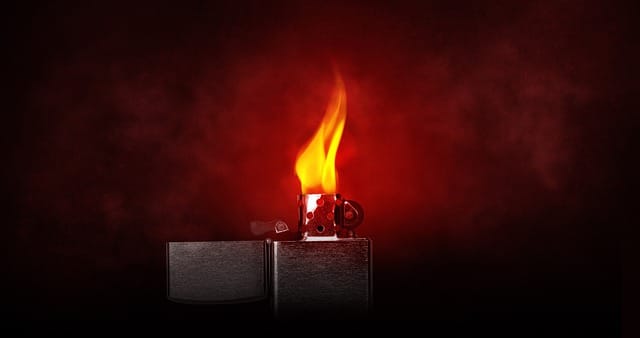
When a gaseous substance is transformed into a liquid, liquefaction occurs.
Liquefaction is the change of state that occurs when a substance changes from a gaseous state to a liquid state. The process occurs due to the action of temperature and an increase in pressure , which allows a high overpressure to be reached. This differentiates liquefaction from condensation , which occurs when a substance changes state from vapor to liquid due to a decrease in temperature.
Liquefaction of gases, which was discovered by British physicist and chemist Michael Faraday in 1818 , is achieved when a gas is cooled until it reaches its condensation temperature, thereby removing the latent heat of vaporization.
This process has improved the efficiency and lowered the costs of producing liquid air, thanks to its importance in the production of oxygen , nitrogen and other gases. It is worth noting that lighters and gas bottles , among other items used in everyday life, contain liquid gas that was obtained through liquefaction.
LNG liquefaction
It can be mentioned that liquefied natural gas (LNG) is natural gas that has been processed for transportation in liquid form. LNG is considered to be the best alternative to monetize reserves in remote locations, where it is not profitable to directly bring the gas to the market through a pipeline or by generating electricity.
In this way, natural gas is transported as a liquid at atmospheric pressure and at -161°C , where liquefaction reduces the volume of the transported gas about six hundred times.
Differences with liquefaction
It is important to clarify that there is a semantic difference between the terms liquefaction and liquefaction , which makes them incompatible as synonyms in certain cases, particularly when talking about soils.
The first is defined as the transformation of a gaseous or solid substance into a gas; the second is more precise, since it involves the conversion of only a gas into a liquid, by compressing it using considerably low temperatures .

Lighters use a liquid gas obtained through liquefaction.
Soil liquefaction
Having said this, we can go on to define soil liquefaction , a phenomenon that consists of applying a great force (also known as load ) to a soil to make it go into a liquid state, or to make its consistency become that of a heavy liquid. It is considered a type of landslide , that is, what happens when a large mass of earth moves and falls down a hillside or slope.
Soil liquefaction occurs due to the instability of the inclination of the land, called a slope , which is carried out so that the soils support each other. This phenomenon is one of the most serious, given its destructive effects. It occurs most frequently in loose granular soils, with at least moderate saturation, with poor drainage ; some examples are gravel and sand with veins of sediment that prevent the passage of water.
Throughout the soil liquefaction process, as the external force (which is usually cyclical and has no drainage) is in full action, the volume of the loose sands usually decreases. This causes an increase in the water pressure found in the pores, and thus the shear stress decreases and the effective stress begins to decrease.
The largest percentage of soils that suffer liquefaction are those composed of deposits that have been produced during the post-glacial period, the so-called Flandrian or Holocene , that is, in the last ten thousand years. These deposits usually have sediments and sands whose particles have comparable sizes, and are found in layers that measure at least one meter thick .
